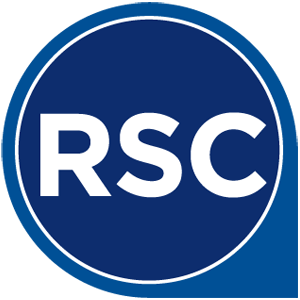
As you know, I just returned from the
ARCHIBUS Nexus conference at the
Marriott Marquis in San Diego. Being curious about the direction of the company, I listened and observed, secretly looking for the flaws in the direction of
ARCHIBUS. This was not because I had lost faith in the product. The skepticism came from the passing of Bruce Forbes the founder and late CEO of ARCHIBUS.
It had been 4 months since his passing. Watching the new CEO, Wise Cho, listening to Steve Segarra the CTO, and seeing Sean Benson step up as a spokesperson, my concerns turned from being concerns to interest and fascination. The conference moved forward as if nothing had changed.
Don't get me wrong - there were moments of silence for Bruce, testimonials about his leadership and humanity, presentations of his legacy and history; these were needed and appreciated as we all healed from this loss.
As the conference transitioned from commemorating a great leader to presenting the next generation of ARCHIBUS leadership, I was once again impressed with the thought that ARCHIBUS is not going to disappear.
The following are just 3 reasons ARCHIBUS will continue to lead the industry:
1) Bruce Forbes - Benevolent Leader

We all know the unique style that Bruce Forbes had; ranging from using his own rearrangement of words in the English dictionary, to showing the gifts he had received from various parts of the world at conferences.
I reflected on Bruce's legacy during the slide presentation of his life. There were several quotes within the video that helped me to reflect a little better on how Bruce had managed ARCHIBUS to success. Quotes like, "Each of you have the same DaVinci in you. We are all genetically related. It relates to how we manage people, processes, and places.", and, "One of the things we are all trying to do is to make things better for ourselves and our families. If we can work ourselves to personal needs and organizational needs, we all win." widened my perspective on Bruce's style and led me to conclude that I had overlooked his great leadership.
"It's not about the money, but what you can impact on the world, what you can provide for future generations. God gives us a very short time here on earth, let's make the most of it."
Not only did he care about his exponentially growing business, but he cared about other's lives as well:
"Success begins with you. Every one of you have your own careers, your own families, your own organizations, your own departments, you own vision for the future. The opportunity that we have together is to take the visions that you individually have, compile them with other visions, and become the remarkable."
He created an environment in which the worker could thrive by being supported by others.
"The ARCHIBUS community basically recommends each other to become recipients of awards. There are many categories. These [people that have received awards] are heroes."
2) Wise Cho - Filling Big Shoes
Now, in direct juxtaposition to Forbes's style, Cho is quiet, pensive, and not at all similar in public style to Bruce.
I saw Wise take his own style and combine it with the genius that Bruce Forbes had put into the company previously. Though maybe not as vivacious as Bruce, Wise has his own aura that fills his position perfectly.
In the very first meeting that he had with the business partners, he outlined the mission statement of ARCHIBUS, the culture, and the vision to go forward, then stepped aside and let other people within the company present.
As a CEO myself, I was very impressed. This tactic combined a continuation of what Bruce had already established with a vision of the future growth of ARCHIBUS. This mix could not have been more perfect. Cho kept to what he knew and did not try to change himself nor ARCHIBUS.
3) Stability - Continuing Without a Hitch
I came to realize that ARCHIBUS is a company that has great internal stability. The conference had the exact same format as it had for the past 18 years.

Even more impressive is the fact that none of the staff at ARCHIBUS left nor vied for other positions. Bruce Forbes built a legacy and a company that could continue to work without him. That energizes and excites me to continue in my line of work.
ARCHIBUS will continue to run strongly and smoothly. It is evident that Bruce Forbes built a company that is self dependent and stable. He has chosen people that will continue his legacy like Wise Cho, and make sure that ARCHIBUS will be strong in leading the industry.
ARCHIBUS is here to stay.
Like what you read? Subscribe to the blog and follow us on Twitter, Facebook, and Linkedin to keep up to date with the latest news from RSC, LLC.
Thoughts? Questions? Comment below and let us know what you think! We'd love to hear your insights.




.JPG)
.JPG)

































